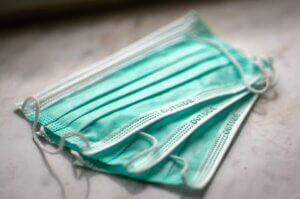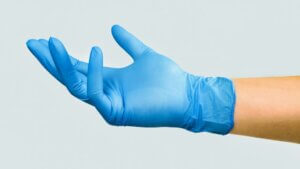Trauma Cleaners: Personal Protective Equipment (PPE) Explained
Trauma Cleaners: Personal Protective Equipment (PPE) Explained
Key Takeaways
- PPE is crucial for trauma cleaners to protect against bloodborne pathogens, toxic chemicals, and other hazardous substances.
- Essential PPE components include coveralls or gowns, nitrile gloves, N95 or full-face respirators, goggles or face shields, and waterproof boots with steel toes.
- The selection of PPE should be based on a comprehensive risk assessment to ensure it provides adequate protection for the specific hazards of each trauma scene.
- Proper training in the use, limitations, and care of PPE is essential for ensuring the safety and efficiency of trauma cleaners.
- Advances in PPE technology aim to enhance safety, comfort, and efficiency, with innovations such as self-decontaminating surfaces and materials that improve wearer comfort.
Summary
This article emphasizes the critical role of Personal Protective Equipment (PPE) in ensuring the safety of trauma cleaners. It covers essential PPE items, such as coveralls, gloves, respirators, eye protection, and boots, and highlights the importance of proper selection, training, and compliance. Future advancements in PPE technology aim to improve safety and comfort for cleaners facing hazardous conditions.
In the demanding and critical field of trauma cleaning, the safety of those who restore environments to their safe, pre-incident state cannot be overstated. Personal Protective Equipment (PPE) serves as the first line of defence against the myriad of hazards encountered, ensuring that trauma cleaners can perform their duties effectively while minimizing risk to their health. This article delves into the essential PPE components, their functions, and the standards guiding their selection and use.
The Critical Role of PPE in Trauma Cleaning
Trauma cleaning specialists are often exposed to hazardous substances, including bloodborne pathogens, toxic chemicals, and other potentially infectious materials. The correct use of PPE is not just a regulatory requirement but a critical component in safeguarding the health and safety of these professionals. It is the barrier that protects individuals from the invisible dangers inherent in their work.
Key Components of PPE for Trauma Cleaners
Protective Clothing
Coveralls or Gowns: Full-body coveralls or gowns are essential for protecting against splashes of hazardous substances. These garments are typically made from materials that offer a barrier against fluids, providing coverage from head to toe.
Gloves
Nitrile Gloves: Trauma cleaners wear thick, puncture-resistant nitrile gloves to protect against bloodborne pathogens and harmful chemicals. Double gloving is a common practice for added safety.
Respiratory Protection
N95 Respirators or Full-Face Respirators: Depending on the level of exposure, cleaners may require N95 respirators to protect against particulates or full-face respirators for environments with toxic vapours.
Eye Protection
Goggles or Face Shields: To safeguard against splashes, flying debris, and other risks, trauma cleaners utilize goggles or full-face shields that provide a seal around the eyes.
Footwear
Waterproof Boots with Steel Toes: Durable boots that resist punctures and have steel toes are vital for protecting feet from sharp objects and heavy items that could cause injury.
Selection and Use of PPE
The selection of PPE is guided by a thorough risk assessment, considering the specific hazards present at each trauma scene. Employers must ensure that PPE fits properly and provides the intended level of protection without compromising the wearer’s ability to work safely and efficiently.
Training and Compliance
Effective training in the proper use, limitations, and care of PPE is essential. Trauma cleaners must know when and how to use each piece of equipment and understand the importance of regular maintenance and replacement.
Challenges and Solutions
Wearing PPE, especially in environments requiring full gear, can be physically taxing and may limit mobility or visibility. Advances in PPE technology continue to address these challenges, focusing on ergonomic design and materials that enhance comfort without compromising safety.
The Future of PPE for Trauma Cleaners
Innovation in materials science and biotechnology holds promise for the next generation of PPE, with potential features like self-decontaminating surfaces, enhanced durability, and improved wearer comfort. The ongoing development and rigorous testing of PPE are vital in adapting to emerging risks and enhancing the safety of trauma cleaners.
The role of PPE in trauma cleaning cannot be understated. It is a critical element that ensures the safety and health of those tasked with cleaning and restoring sites affected by traumatic events. As the industry evolves, so too will the standards and technologies surrounding PPE, always to maximize protection for these essential workers.
FAQS
What services do trauma cleaners provide?
Trauma cleaners specialize in the cleaning and sanitization of sites affected by traumatic events such as crimes, accidents, and unattended deaths. Their services include biohazard removal, odour elimination, and the restoration of the site to a safe and clean state.
How are trauma cleaners trained and certified?
Trauma cleaners undergo rigorous training in biohazard cleanup, chemical safety, and the proper use of personal protective equipment (PPE). Certification typically involves completing courses from recognized organizations in biohazard recovery and OSHA (Occupational Safety and Health Administration) compliance.
Is trauma cleaning safe, and how is safety ensured?
Trauma cleaning is performed under strict safety protocols to protect the cleaners and the public. Safety is ensured through the use of PPE, adherence to health and safety regulations, and thorough training in handling biohazardous materials. Cleaners follow specific procedures to minimize the risk of contamination or exposure to harmful substances.
Why Choose AllAces?
AllAces Cleaning & Restoration has over 35 years of industry experience offering a range of specialty cleaning and restoration services across Brisbane, Sydney, Melbourne, and surrounds. Our IICRC-certified trauma cleaners are highly trained and experienced to ensure the return of a safe and healthy environment.



